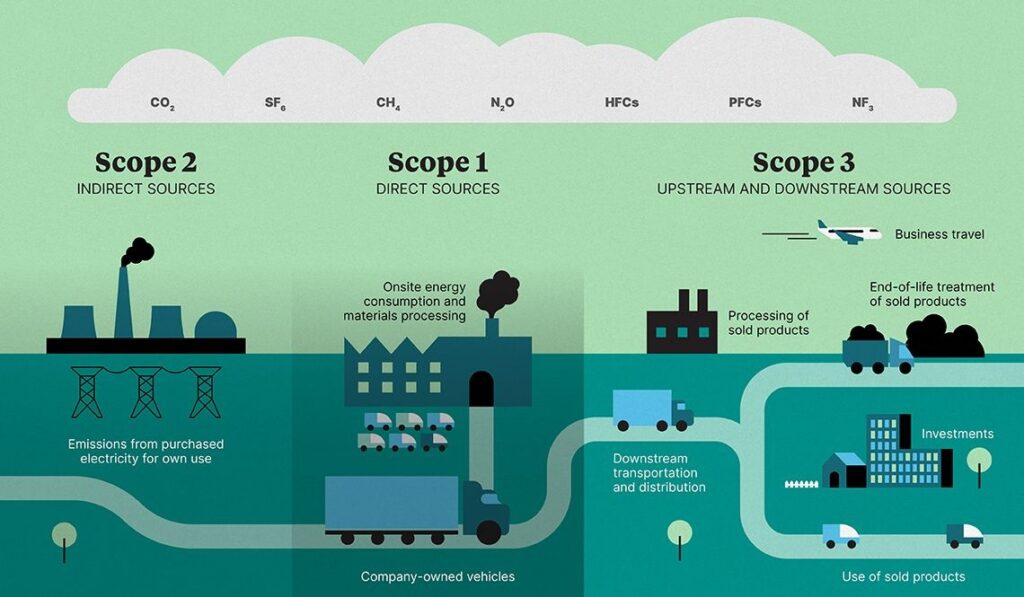Greenhouse gas emissions (GHG emissions) are responsible for more than half of the pollution emitted in the United States, according to estimates supplied by the Environmental Protection Agency (EPA). Did you know that there’s more to global emissions than what’s released from a car’s tailpipe or a factory’s smokestack? Both are great starting points for reducing the amount of greenhouse gases you contribute to the atmosphere.
Although CO2 emissions scopes may seem complicated at first, their major purpose is to aid in the development of a GHG inventory by calculating your total emissions or the amount of CO2e that your organization emits based on everything that is necessary for it to operate efficiently. Exactly what are scope 3 emissions, how can we keep track of them, and why should businesses bother?
What precisely are Scope 3 emissions?
The most widely known accounting rules for greenhouse gas emissions, the Greenhouse Gas Protocol, divide GHG emissions into three “scopes.” Direct emissions from sources within an organization’s control are classified under Scope 1, whereas indirect emissions from the purchase and use of steam, electricity, and HVAC systems are classified under Scope 2. Because of its energy use, a company is indirectly responsible for the generation of these emissions of greenhouse gases. All extra upstream and downstream indirect emissions caused by an organization’s activities are included in Scope 3.
Why is it important for a company to calculate its Scope 3 emissions?
Measuring Scope 3 emissions has several benefits. Companies may be able to save the most money and reduce their carbon footprint by looking outside their own operations for solutions. Both public and commercial institutions face this problem. Scope 3 emissions reduction efforts may help an organization get closer to decarbonization and sustainability.
Why it’s a win for businesses
Scope 3 emission assessments allow businesses to conduct a number of things, including making sure they’re with ever-changing regulations. Find the emission sources throughout the value chain and focus on eliminating them first.
- Identify the most sustainable performing suppliers and those who are slipping behind in the market.
- Decisions on which projects may yield the greatest reductions in emission levels should be informed within the framework of the procurement, product development, and logistics teams.
- Promote product innovation in order to develop things that are more environmentally friendly and efficient in energy consumption.
- Create a climate change strategy that will lead to visible improvements in the natural world.
- In order to reduce emissions from business travel and employee commuting, it is important to get employees involved in a beneficial way.
- Organizations in the public sector may reap these benefits, as well.
Scope 3 emissions, especially those made across the supply chain, allow government agencies to do the following. Focus your efforts on decarbonization where they will have the most impact.
- Reduce emissions and show locals the benefits of decarbonizing the supply chain by establishing a cooperative rapport with your vendors.
- Use your massive buying power to spark innovation and propel it forward.
- Staff members should be incentivized to reduce their emissions from business travel, commuting, waste, and water consumption.
- Give your organization’s constituents and communities a comprehensive report on its impact and development.
- Help the country as a whole get closer to its Net Zero ambition.
Conclusion
These are the most important factors to consider when calculating and reporting Scope 3 emissions for any enterprise, public or private.











